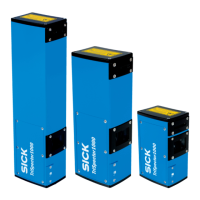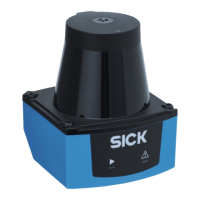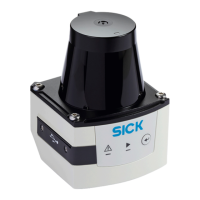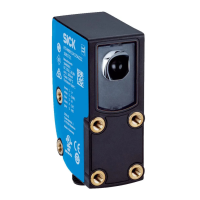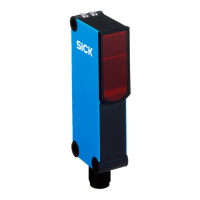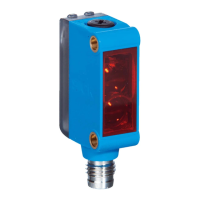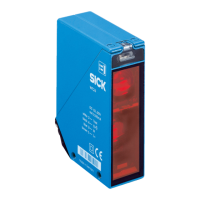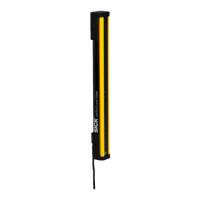7.8.8 Selecting jobs via digital inputs
Figure 39: Job Selection Input section
The Job Selection Input section enables job selection via digital input signals. The number
of available inputs depend on the number of I/O configured as inputs in the I/O Defini‐
tions section, see "Configuring the digital in- and outputs", page 50.
NOTE
The input signals must be kept high during the whole session, not only when the job is
initiated.
■
Each row in the list represents a unique combination of available inputs.
■
Select a job in the Job drop-down list to match it with a set of inputs.
■
Click the Auto-fill button to include all available jobs in the list (one job per row).
■
Click the Clear button to remove all jobs from the list.
7.8.9 Fieldbuses
The TriSpector1000 has native EtherNet/IP support. To connect the TriSpector1000 to
a PROFINET network, use the fieldbus module CDF600-2200 from SICK. See "Connect‐
ing TriSpector1000 to CDF600-2200", page 72 for details.
7.9 Using the SOPAS ET emulator
Use the SOPAS ET emulator to simulate and test device settings off-line without access
to a real TriSpector1000. The main differences when using the emulator compared to a
real device are:
■
Images will not be affected by changes made in the Image workflow step.
■
Processing times may differ, since the emulator uses the PC hardware instead of
the device hardware.
■
The digital I/O connections are disabled.
7.9.1 Starting the emulator
There are two ways to start the emulator:
■
Starting the emulator when connected to a TriSpector1000.
■
Starting the emulator when starting SOPAS ET (without PC application running).
7 OPERATION
54
O P E R A T I N G I N S T R U C T I O N S | TriSpector1000 8021808/12ID/2019-01 | SICK
Subject to change without notice

